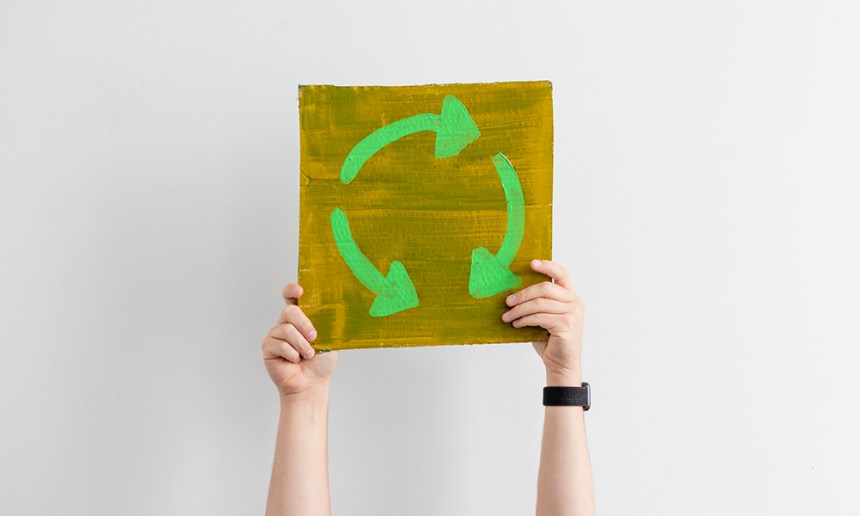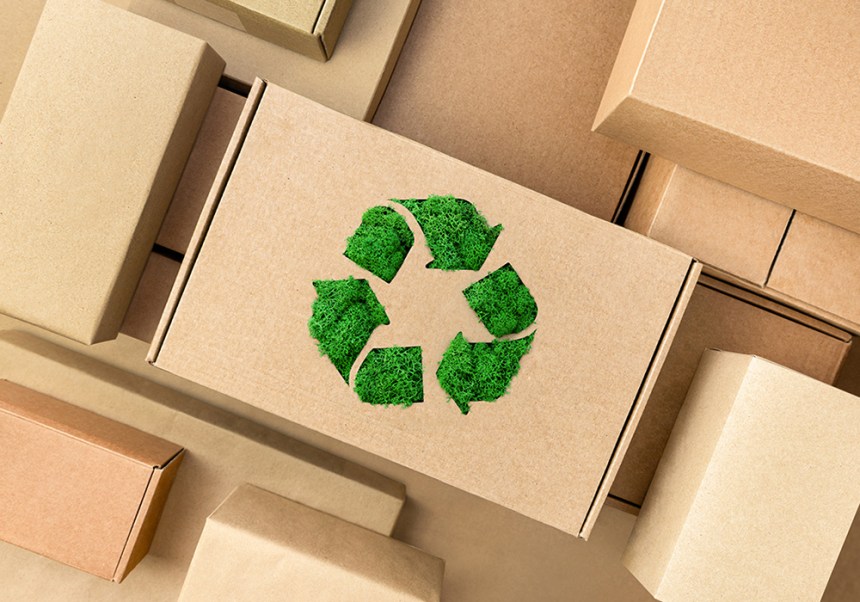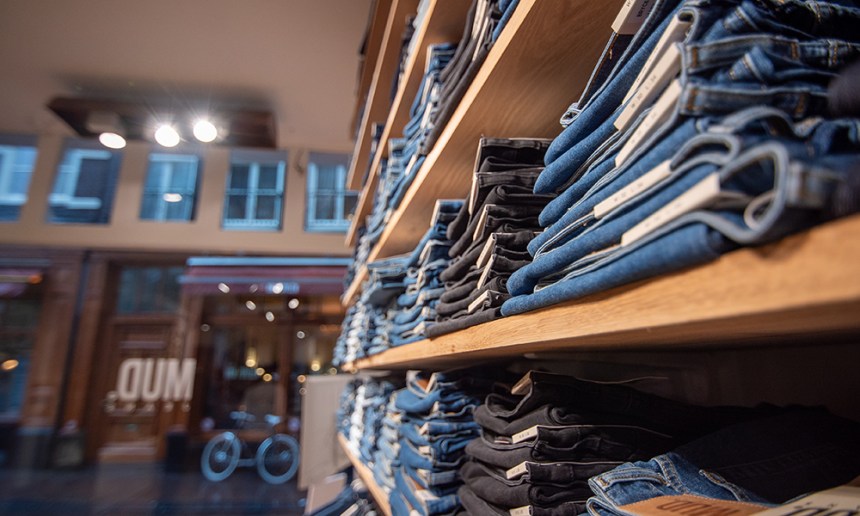As the Festival of Circular Economy returns for its fourth year, Circular Online brings you live updates from it’s two jam-packed virtual days.
Day 1 will look at the future of the design landscape, current business model challenges and practical use-cases of circular economy models in operation.
Day 2 takes us through the design lifecycle, from materials and products, to infrastructures and supply chains for a circular economy.
Day 1
Keynote: A Future Forward Perspective on Circular Living
‘We are called to be architects of the future, not its victims.’ – R. Buckminster Fuller.
In a fascinating Keynote, Dr Sally Uren OBE, Executive Director & Chief Acceleration Officer, Forum for the Future, shared this quote from the renowned architect to show how achieving a circular economy by 2050 is within reach.
Dr Uren told delegates that if we are serious about circularity, it starts with changing our mindset.
If we carry on what we’ve been doing and thinking in the same way, we will carry on with the same systems, Dr Uren said.
On the first morning of the Festival, Dr Uren explained what she sees as four business transition trajectories: profit supreme, shallow gestures, tech optimism, and courage to transform.
Profit supreme prioritises profit over societal challenges, shallow gestures involve superficial commitments, tech optimism utilises technology, and courage to transform focuses on bold ambitions for positive impact.
Interestingly, Dr Uren explained that while the profit supreme trajectory may not be good for climate resilience, it can encourage circularity driven by input cost.
Dr Uren went on to say that the key to unlocking a circular economy is to understand the world as a set of interconnected systems.
“When we think about circularity and waste management, we think about a set of material streams. If we really want to achieve this transition, we need to understand the interconnectivity between material resource streams and value chains,” Dr Uren said.
Concluding an insightful keynote, Dr Uren shared a quote from science fiction author William Gibson: ‘The future is already here it’s all around us, it’s just not evenly distributed.’
Changemaker Session: Design must lead, not follow

At the Festival of Circular Economy, a provocative session titled Design at the Crossroads laid bare the growing tension between visionary design and cautious corporate culture—and called for a shift in power.
Experts Mark Shayler and Paul Foulkes-Arellano didn’t mince words: sustainable transformation won’t happen unless designers are empowered early, treated as systems thinkers, and supported by clients willing to break the mould.
Design, they argued, is “the most powerful environmental tool we have”—but it’s often brought in too late, boxed into briefs that treat circularity as a bolt-on rather than a foundation.
“We’re still treating 20% recycled content like that’s the summit of sustainability,” Shayler warned. “It’s not. It’s barely the foothills.”
The session urged businesses to rethink how they work with designers—starting with mindset.
We’re still treating 20% recycled content like that’s the summit of sustainability
Too often, marketing directors and executives “quake” at the idea of system-wide change, fearing the boardroom more than the breakdown of the planet. The result? Performative “design theatre” in place of real innovation.
Yet there was hope. Designers today are refusing briefs from clients not ready to engage meaningfully with circularity. They’re choosing to work with businesses who, as Shayler put it, “have already turned up at the station.” AI is also proving a powerful ally—turning complex ideas into clear graphs that win over skeptical CFOs and unlock funding for genuinely circular innovation.
But the biggest takeaway? We need better clients. “Clients like you and me,” joked Shayler, “iconoclasts willing to break things up.”
Designers were also urged to rediscover their inner “activist”—to use workshops not just to ideate, but to radicalise. When designers embed circularity into their practice and their presence, real change can ripple across supply chains and boardrooms alike.
Textile Futures: Circular Business Models in Action
This expert panel dived into the intriguing subject of the future of textiles by examining what their circular business models look like in action.
Chaired by fashion industry expert and education consultant in circular design and responsible business Katarina Rimarcikova, the panel each had the floor to give an overview of their businesses before the session rounded off with questions from delegates.
Michael A. Cusack, Chief Sustainability Officer at Advanced Clothing Solutions (ACS), spoke about how the business began by renting out Scotland’s traditional dress: kilts.
“Kilts are so expensive, it makes sense to rent. This is how we were born,” Cusack said.
Since ACS was founded in 1997, the company has grown and evolved from renting out highland wear to formal wear, many other types of clothing, and even tents.
Despite operating in the rental market for almost 20 years, Cusack said it wasn’t until 2018 that the penny dropped that ACS was a circular economy business.
Cusack was giving an environmentalist a tour of the site and speaking about how much he admired the innovations he saw in the circular economy. The environmentalist stopped him and said that ACS were one of the innovative circular economy business models Cusack was praising.
Going back even further, all the way to the 1940s, Mattia Trovato, spoke about how Manteco has been pioneering recycled wool for almost a century.
During the 1940s, there were no imports of the finest wools into Italy,” Trovato, Head of Communication & Sustainability Expert at Manteco, said. “We had to find a way to keep producing wool fabrics out of necessity.”
Over the years, the company has never lost its DNA of wool recycling. Then in the early 2000s, the 3rd generation of the family that founded Manteco decided that circularity was the future of textiles.
Investment into research and development put the company in a good place when demand for recycled wool boomed in 2020 when trade was impacted by the COVID-19 pandemic.
Trovato explained to Festival delegates that Manteco sources scraps from textile producers and manufactures something new from these ‘waste materials’.
The biggest challenge of getting this source of material flowing was convincing the entire supply chain to collaborate on giving a new life to what was previously considered scrap material.
Remanufacturing: A Gamechanger for the Future of Circular Economy
“Remanufactured goods are everywhere. They cutting costs and ensuring circularity, without compromising performance,” Agnese Metitieri, Circular Economy Ventures Lead at CIRCULEIRE, said to open her fascinating talk.
CIRCULEIRE is an Irish industry-led public-private partnership dedicated to circular innovation. Metitieri shared insights from CIRCULEIRE’s report on remanufacturing but opened the discussion by explaining what remanufacturing is in practice.
Remanufacturing is a term often used incorrectly as an alternative to repurposing, restoring, remaking, or a multitude of other terms. To clear up any misconceptions, Metitieri set out steps of the remanufacturing process.
Step 1 is when a company manufactures a product and sells or leases it to a customer. Step 2 is when the product eventually becomes worn or parts break.
Step 3 sees the product returned to the manufacturer or remanufacturer, who disassembles it, inspects the product, and replaces any parts that are worn or broken.
Step 4 involves the product being reassembled and stress-tested. If applicable, any software or firmware updates are applied.
The final step sees the new, remanufactured, product offered on the market again with a ‘good-as-new’ or ‘better-than-new’ warranty.
Metitieri emphasised that the remanufactured product is technically not the same as the old one, and it is treated as a new product.
She also told Festival delegates that remanufacturing is much more efficient, and potentially easier when a product is designed from the outset to be remanufactured.
Metitieri concluded her session by explaining how remanufacturing can have a positive impact on the triple planetary crisis of climate change, biodiversity loss, and pollution.
Diving into the insights of CIRCULEIRE’s reports, Metitieri highlighted that remanufacturing has the potential to reduce resource extraction by up to 80%.
She explained that remanufacturing could also achieve a cut in carbon emissions of up to 93% and decrease production costs by up to 65%.
Design-Led Collaboration to Close the Circularity Gap

Designers, data analysts, policymakers, and waste specialists gathered for the session: Waste Not: Building End-of-Life into Business Models, where the central message was clear: end-of-life needs to be designed from the start—and no single part of the value chain can go it alone.
Chaired by Dr Adam Read MBE (SUEZ UK), the panel featured experts from across the sector, including Melody Carraro (Veolia), Tabitha Skeats (FCC Environment), Doug Simpson (GHD), and Gaspard Duthilleul (Greyparrot).
Together, they tackled one of the biggest challenges facing the circular economy: how to reduce waste before it’s created—and ensure new innovations don’t outpace the infrastructure needed to deal with them.
Carraro emphasised that good packaging design means thinking beyond aesthetics or volume. “A beautifully designed material that can’t be collected, sorted or recycled is just expensive waste,” she warned. Bioplastics were singled out as a rising issue—technically compostable but often rejected by existing facilities due to misalignment with real-world systems.
Circularity needs to be baked into regional strategies—linked to incentives like VAT relief for reuse
Duthilleul’s contribution brought AI into the spotlight. Greyparrot’s analytics are helping processors identify waste streams in real-time, generating actionable insights to improve recovery rates and efficiency. “It’s not just data for data’s sake,” he said. “It’s about closing feedback loops between design and disposal.”
Meanwhile, Simpson and Skeats called for stronger cross-sector collaboration. Modular design, adaptable assets, and clearer policies were identified as key to unlocking circularity, particularly in construction and urban planning. “Circularity needs to be baked into regional strategies—linked to incentives like VAT relief for reuse,” Simpson argued.
The session concluded with a rapid-fire debate on the most vital driver of change. While all agreed material innovation and policy reform matter, the room largely settled on a unanimous truth: nothing shifts until behaviour does.
“Design, data and infrastructure matter—but unless people are empowered and excited to do the right thing, none of it sticks,” said Carraro. “Systemic change starts with human change.”
The post LIVE UPDATE: The Festival of Circular Economy 2025 appeared first on Circular Online.







